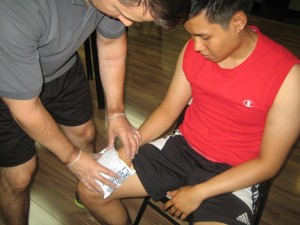Folliculitis is a skin condition where the hair follicles become inflamed. It is caused by fungal or bacterial infections. It appears like small red bumps or white-headed pimples found around the hair follicles, which is the tiny pockets where each hair grows. The infection can spread and can result into non-healing and crusty sores and can cause permanent loss of hair and scarring. If you want to learn more about this condition, read here.
Symptoms of folliculitis
- Pus-like blisters that breaks open and forms a crust over
- Red and inflamed, itchy or burning skin
- Clusters of small red bumps or white-headed pimples that are found around hair follicles.
- Large swelling bump or mass and there is tenderness and pain
Causes of folliculitis

Folliculitis is caused by an infection of the hair follicles from the staphylococcus aureus bacteria, viruses, fungi and an inflammation from ingrown hairs. The condition is superficial or deep which is the most severe. Follicles are thickest on the scalp and they occur anywhere in the body except the palms, sole, lips and the mucous membranes. Damaged follicles are susceptible to infection such as the following:
- Skin conditions such dermatitis and acne
- Friction caused by shaving or from a tight clothing
- Covering on the skin such as plastic dressings or adhesive tapes
- Heat and sweating caused by wearing rubber gloves or waders
- Injuries to the skin such as scrapes or surgical wounds
There are factors that make a person susceptible to the folliculitis which include the following:
- The person has a medical condition that minimizes the resistance to infections like diabetes, chronic leukemia and HIV/AIDS.
- Being overweight
- Acne or dermatitis and taking medications like steroid creams or long-term antibiotic therapy for acne.
- Shaving and previous damage to the skin caused by injury or surgery
- Soaking in a hot tub that is not properly maintained
- Regular wearing of clothing that traps heat and sweat such as rubber gloves or high boots
Treatment and home remedies
- Applying a warm compress or a moist washcloth at several times a day in order to relieve discomfort and help drain the area. Moisten the compress using salt water solution by mixing a teaspoon of table salt in 2 cups of water.
- Apply over-the-counter antibiotics in the form of gels, creams and washes.
- Apply an oatmeal lotion or an over-the-counter hydrocortisone cream over the itchy skin.
- Wash the infected skin at least twice a day with antibacterial soap and use a clean washcloth and towel each time and avoid sharing the towels and washcloths to others. Wash clothing that has touched the affected area with hot and soapy water.
- When shaving, use an electric razor and rinse the skin with warm water and apply a moisturizer.
Preventing folliculitis
In order to avoid developing folliculitis, it is important to avoid wearing tight clothes to help reduce friction between the skin and the clothing. If wearing rubber gloves, after using them, turn them inside out and rinse with soap and water and dry it thoroughly. Use an electric razor or a clean blade when shaving. Hot tubs should be cleaned regularly as well as heated pools and make sure chlorine is added as recommended.
